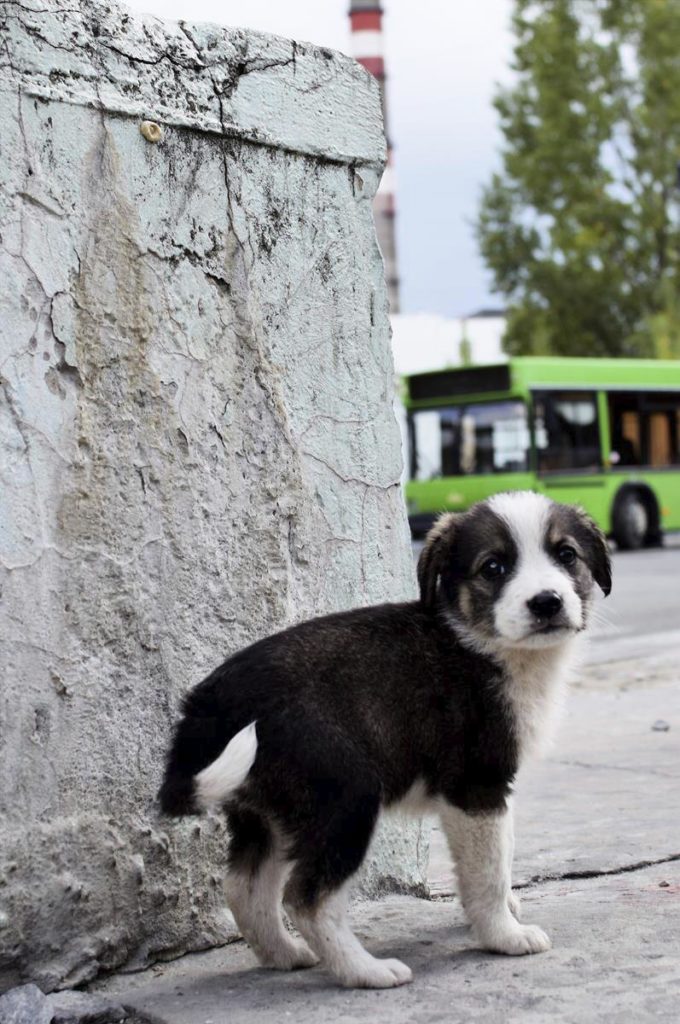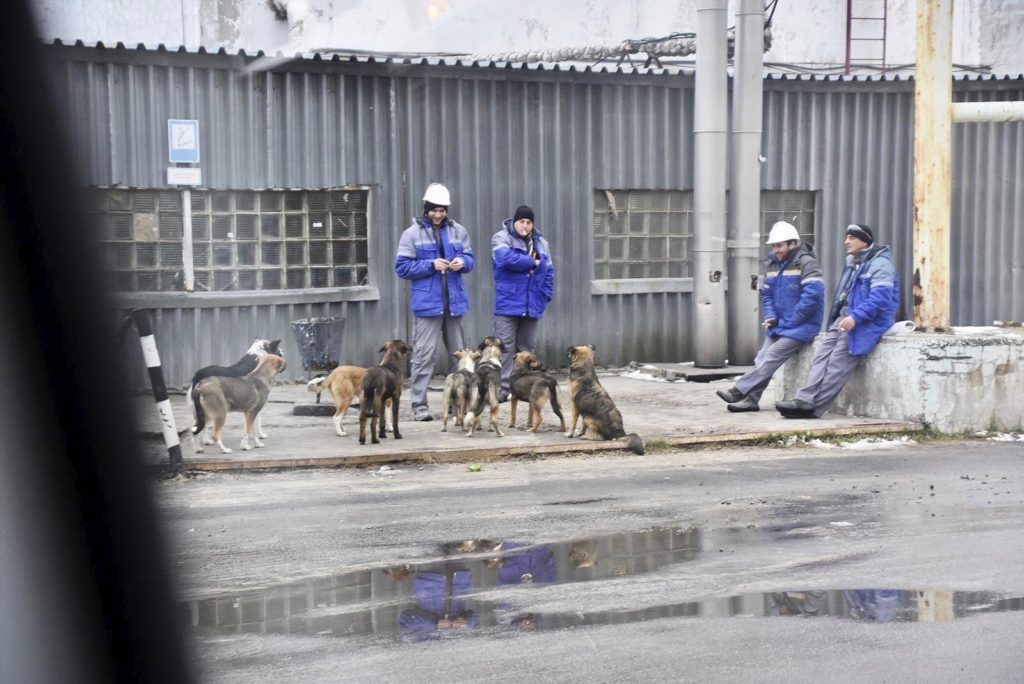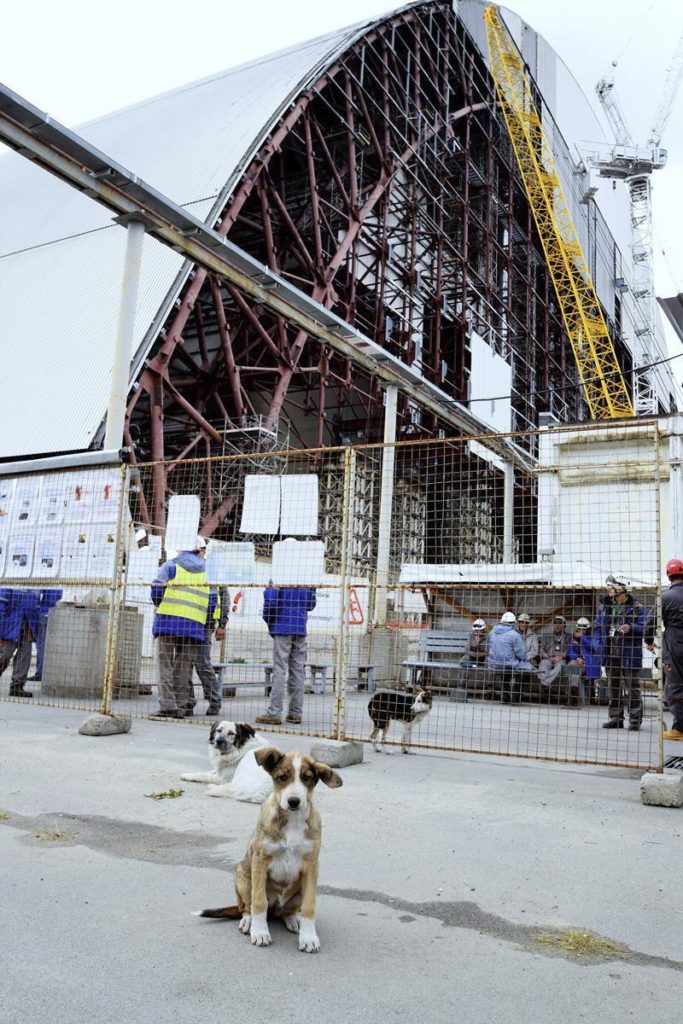The Inside Story of a Massachusetts Animal Control Officer’s Efforts to Save Dogs Effected by the World’s Worst Nuclear Disaster
This past spring HBO released the critically acclaimed television series Chernobyl, which was an instant hit across the globe. With nearly two million viewers per episode, the 5-part mini-series would go on to receive nineteen nominations at the 71st Primetime Emmy Awards, winning Outstanding Limited Series, Outstanding Directing, and Outstanding Writing.
The series centers around the Chernobyl nuclear disaster of April 1986 and the unprecedented cleanup efforts that followed.
The worst nuclear accident the world has ever seen unfolded in Pryp’yat, 10 miles from the city of Chernobyl (which is now northern Ukraine), when a reactor at a nuclear power plant exploded and burned. Shrouded in secrecy, the incident was a watershed moment in both the Cold War and the history of nuclear power.
This calamitous event occurred on April 25-26, 1986. On April 27th, the 30,000 inhabitants of Pryp’yat began to evacuate. Scientists estimate the zone around the former plant will not be habitable for up to 20,000 years.
Hundreds of thousands of people were contaminated, leading to radiation-induced illnesses still seen to this day. Research conducted by The United Nations Scientific Committee on the Effects of Atomic Radiation shows more than 6,000 children and adolescents developed thyroid cancer after being exposed to radiation from the incident.
Livestock and other domestic animals were born with deformities, including thousands of family dogs and cats left behind.
About 50 miles south of Boston, in a town known as “The Whaling City”- due to its 19th century significance as a whaling port- New Bedford Director of Animal Control Manny Maciel, has been in the business of helping animals for over 30 years. Maciel has not only embarked on saving the lives of pets locally, but in recent years his efforts have reached out to a global community.

“Animals are my life,” Maciel stated. “Over the last decade I have been able to utilize my background not just here in Massachusetts, but in various parts of the world too. There are many areas that do not have the resources to provide proper animal care, especially after disasters, and these are the places where I like to go in and help.”
This past summer Maciel heeded a call from the non-profit Clean Futures Fund based in Bath, Michigan to travel to the Ukraine as part of a team of volunteers helping to vaccinate and sterilize hundreds of stray dogs near the Chernobyl nuclear disaster. Clean Futures has initiated a three-year program to sterilize all the Chernobyl dogs within that span of time.
“We spayed and neutered their dogs and checked them for radiation then got them vaccinated -and also some cats in the area- then returned them back,” Maciel said.
At first, the Russian government was in charge of culling the hundreds of dogs left by their families after the nuclear disaster. The dogs initially retreated to the woods, but because of the many Russian wolves roaming the forests, the remaining dogs worked their way back to the complex where they could be fed and cared for by volunteers.

In 2015 scientists estimated there were seven times more wolves in the exclusion zone than in nearby comparable reserves, thanks to humans’ absence.
“It was frightening,” Maciel admitted. “But it was definitely a great experience.”
Maciel has been involved in disasters from floods to hurricanes for over a decade. His involvement with the Chernobyl dogs this past summer was probably the most challenging. He worked closely with Dr. Jennifer Betz head veterinarian for the program.
“We’re trying to provide a little bit of a better life for these animals by spaying, neutering, vaccinating, providing exams and parasite control for any of them we’re able to come in contact with,” explained Dr. Betz.
In and around Chernobyl hundreds of second and third generation dogs still roam the complex. Most not neutered, these one-time pets breed indiscriminately allowing a mongrel population to grow. Some dogs are feral, but most are domesticated enough to be approached, fed, and partially handled by a group of volunteers who have provided a guardianship over the dogs for years. But just to feed and care for these dogs is not the answer. A healthy animal is a reproductive one, which is how the sterilization program of Clean Futures evolved.

“The dogs are the unintended victims of the accident, so anything we can do to improve their quality of life and to ensure that they have a better hope for the future, we are going to do,” said Lucas Hixson, co-founder of the Clean Futures initiative. “I don’t think we’ll ever get zero dogs in the exclusion zone but we want to get the population down to a manageable size so we can feed and provide long-term care for them.”
Enter Maciel. His skills have proven to be invaluable in the capturing and handling of the dogs, allowing treatment to be received the dogs otherwise would not have access to.
“The first day I was a little apprehensive approaching these animals, not knowing how they would react, but after day one my years of training took over.”
The dogs were constantly checked for levels of radiation. In three weeks, the team helped more than 630 animals. After being vaccinated and sterilized, the dogs were released and continued to be cared for by the many volunteers.
It is not known how many unsterilized/unvaccinated dogs still exist, but taking this spay/neuter release approach, it incorporates the Leonardo Fibonacci 70% rule. Fibonacci was a thirteenth century mathematician from Italy, who created a formula relating to agricultural productivity.
Louis Pasteur, while working on an early vaccine for disease prevention used the model to predict that 70% of a susceptible population would have to be vaccinated in order to prevent an epidemic of almost any contagious disease.
Fibonacci’s 70% model is still recognized as valid by public health authorities such as the World Health Organization and the Center for Disease Control. If the 70% rule is successful with the Chernobyl dogs, one can only hope that a zero population will be realized one day.
For more information on or to make a donation to the Clean Futures Fund, please visit cleanfutures.org. All images used with permission of Clean Futures Fund.











